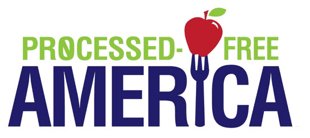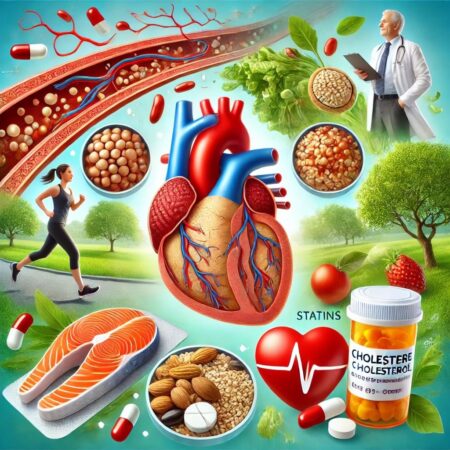Cholesterol has long been cast as the villain of heart health—the culprit behind clogged arteries and life-threatening heart attacks. It’s often blamed on foods like egg yolks, bacon, red meat, and full-fat dairy, with warnings to steer clear if you want to protect your heart.
But here’s the twist: cholesterol isn’t just necessary—it’s downright essential. In fact, most of the cholesterol circulating through your blood is made by your body, meaning you don’t even need to get it from food. Without cholesterol, life wouldn’t be possible.
So, what’s the deal? If cholesterol is bad for our health, why is our body programmed to make so much of it? And is heart disease really cholesterol’s fault, or is it something else that’s doing the killing and framing cholesterol for the murder? Let’s dig into the truth behind this misunderstood molecule.
The Role of Cholesterol
Few people know the vital and integral role cholesterol plays in keeping our bodies healthy. This fat-like substance plays a key role in keeping your cell membranes strong and flexible. It serves as the starting material for making vitamin D—as your body converts cholesterol into Vitamin D when sunlight hits your skin. It’s also the raw material for the endogenous production of vital hormones like estrogen and testosterone. Even your digestion depends on cholesterol—your liver uses it to produce bile, which helps break down dietary fats so your body can use them efficiently. Cholesterol, therefore, is a good thing.
Cholesterol is only found in foods from animal sources such as eggs, meat, dairy products, fish and shellfish. Plant foods do not contain cholesterol. Your body requires about 1,000 milligrams (1 gram) of cholesterol each day, but it does not depend upon cholesterol from foods. On average, only about fifteen percent of the cholesterol in your body comes from dietary sources, your body (mainly your liver) makes the other eighty five-percent. In other words, even if you reduce your intake of dietary cholesterol to zero, your liver will make a little more cholesterol to make sure have enough. It’s that necessary for life. Conversely, if you eat more cholesterol than normal, your liver will make less of it, so that you don’t exceed the 1,000 milligram requirement. Of those 1,000 milligrams, about 800 of them are turned into bile salts. The other 200 milligrams are used for the other body functions mentioned previously.
Since cholesterol is fatty and blood is watery, the two don’t mix; they’re like oil and water. In order to travel in the bloodstream, cholesterol needs to be transported by carrier molecules that are produced by the liver called lipoproteins. Lipoproteins are like little kayaks that the cholesterol sits in as it is being transported through the blood to the places in the body where it is needed. Since the body uses cholesterol in different ways, the liver makes different types of lipoproteins. These are categorized as low density lipoproteins (LDL), very low density lipoproteins (VLDL), and high density lipoproteins (HDLs). All of the cholesterol that is being carried is identical; it is the lipoproteins that are different.
VLDL and LDL are responsible for transporting cholesterol from the liver to be used by the body’s cells. HDL is responsible for “scouring” the walls of the blood vessels and collecting any unused cholesterol and carrying it back to the liver. The liver then recycles the cholesterol or uses it to make bile salts. This is an amazing mechanism in the body. Under normal healthy circumstances, cholesterol levels are tightly regulated, and all cholesterol is good cholesterol!
When Cholesterol Turns Bad
As mentioned earlier, your body is programmed to make a certain amount of cholesterol each day. It sends out this cholesterol in VLDLs and LDLs, assuming that all of it will be used. For instance, your body assumes that you need a certain amount of cholesterol for making your daily requirement of vitamin D and other hormones. But if you never go out into the sun, or if when you do go out into the sun you lather up with sunblock, the cholesterol doesn’t get used. Not only do you become deficient in vitamin D and hormones, but you also now have a bunch of unused VLDL and LDL cholesterol floating around in your blood. This “free” cholesterol has two fates: It can be protected by antioxidants until HDL can come and “rescue” it and return it to the liver undamaged. Once it reaches the liver, it can be pumped via the bile into the large intestine, where dietary fiber can latch on to the cholesterol and eliminate it from the body through the bowel movement. This is why HDL is called “the good cholesterol.” This would be the ideal fate.
The other fate is more grim, and unfortunately the one that occurs in most people. The “free” cholesterol gets attacked by free radicals and become oxidized because there aren’t enough antioxidants present in the body to protect it. The damaged cholesterol makes its way into plaques on the inner lining of the arteries, clogging them and leading to heart disease. Since this type of damaged cholesterol is transported in VLDLs and LDLs, it is called “the bad cholesterol” Typically in this scenario, there isn’t enough HDL scavenging around in the blood to rescue all of the damaged cholesterol.
High cholesterol occurs when you’re not eliminating enough of your unused cholesterol. Even in fate number one, if your rescued cholesterol makes it all the way to your intestine, but there isn’t enough fiber in your diet, most of that cholesterol will be recycled back to your liver and will be sent back out into the bloodstream in addition to all the new cholesterol that is being made. Also, if your liver is not generating enough HDL, then your cholesterol begins to build up by way of fate number two.
Consumption of refined cooking oils such as soybean oil and corn oil, as well as too much sugar and refined carbohydrates, can also raise cholesterol levels. The liver makes cholesterol from protein, sugar, and starch, so you can end up with high cholesterol levels just by eating too many of these types of foods, even if they don’t contain cholesterol.
Restoring Healthy Cholesterol Levels
The main source of high cholesterol is interference with cholesterol utilization. The best way to manage cholesterol levels is to get enough sunshine on your skin. Twenty minutes of unprotected exposure to the sun is enough, after that you can cover up. Secondly, you need to eat an abundance of plant foods (fruits, vegetables, legumes, and whole grains). This way you will have an abundance of antioxidants in your bloodstream to protect cholesterol from being oxidized, and fiber in your intestines to remove cholesterol from your body. You can also help your liver generate more HDLs by getting 20 to 30 minutes a day of aerobic exercise, such as brisk walking; consuming enough omega-3’s from fish and supplements; eating monounsaturated fat from nuts, avocados and olive oil; getting at least 35 grams of fiber a day; limiting intake of fried food and saturated fats, and cutting out trans-fats.

